[Last updated July 2023]
Not sure how to choose a table tennis blade? Well, you’re not alone. There are many table tennis blades to choose from and lots of confusing jargon to understand. That’s why we’ve decided to put together a comprehensive table tennis blade guide — I wish something like this was around when I first stepped into the market.
As a brief overview, here are the best table tennis blades in 2023:
- Best Offensive All-Wood Blade — Yasaka Goiabao 5
- Best Offensive Carbon Table Tennis Blade — Butterfly Timo Boll ALC
- Best Allround Blade — Butterfly Petr Korbel
- Best Defensive Blade — Donic Defplay Senso V3
Yet this snapshot doesn’t give you all the necessary information. Below we’ll hand-pick 8 of the best blades in table tennis for the offensive, allround, and defensive styles, explain why we picked each, and cover their weaknesses. After which, we’ll describe everything there is to know about blades to help out you folks who are devoted researchers.
Table of Contents
ToggleWhy Should You Trust Table Tennis Spot?
Table Tennis Spot is the top source of online table tennis info for beginners through to advanced players — we have been producing guides for almost 10 years.
Our expert team meticulously writes each guide to give you all the necessary knowledge.
For this guide to the best blades for table tennis, we considered the following criteria:
- Speed
- Control
- Flexibility
- Hardness
- Value
- Appearance
- Customization
- And more!
| Image | Blade | Class | Buy |
|---|---|---|---|
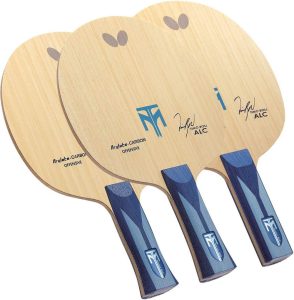
|
Butterfly Timo Boll ALC | Offensive | CHECK CURRENT PRICE |
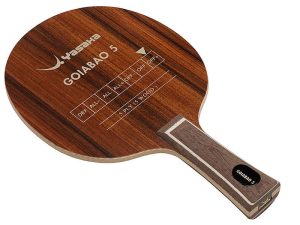
|
Yasaka Goiabao 5 | Offensive | CHECK CURRENT PRICE |
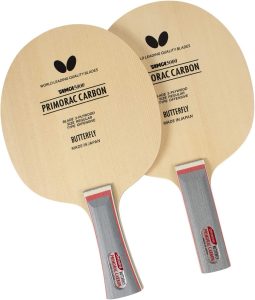
|
Butterfly Primorac Carbon | Offensive | CHECK CURRENT PRICE |
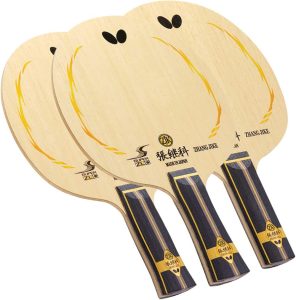
|
Butterfly Zhang Jike Super ZLC | Offensive | CHECK CURRENT PRICE |
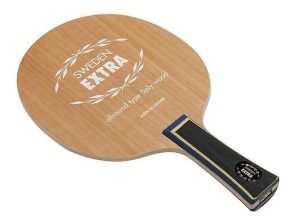
|
Yasaka Sweden Extra | Allround | CHECK CURRENT PRICE |
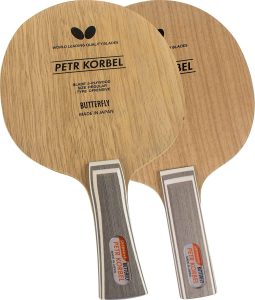
|
Butterfly Petr Korbel | Allround | CHECK CURRENT PRICE |
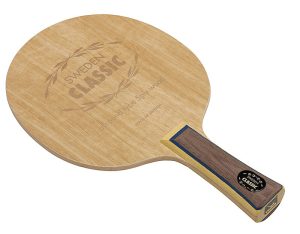
|
Yasaka Sweden Classic | Defensive | CHECK CURRENT PRICE |
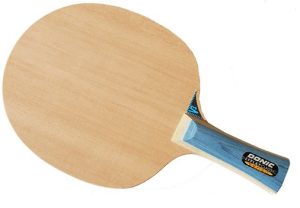
|
Donic Defplay Senso V3 | Defensive | CHECK CURRENT PRICE |
Table Tennis Blade Reviews
1. Butterfly Timo Boll ALC — Best Offensive Carbon Blade
Features
- Plies: 5W + 2ALC
- Class: Offensive
- Thickness: 5.8 mm
- Weight: 86 g
- Handle types: Flared, straight, anatomic
Pros
- Highly popular with pros and amateurs
- Very appealing handle
- Fast
- Great for looping
Cons
- Expensive
- Hard to control
Rating: 9.4
Designed in combination with fan-favorite player Timo Boll, the Timo Boll ALC composite blade performs incredibly well at the top level. It has proven very popular with professional players besides Boll and also, with advanced amateur players too. The Timo Boll ALC is a carbon blade with 5 layers of wood and 2 layers of arylate carbon. While a little stiff, it feels great in the hands and it really helped to evolve my looping ability. It’s been my current blade for many years! Therefore I feel that it is the best blade in table tennis right now if you’re at an advanced level.
Of course, as it’s a Butterfly blade, it doesn’t come cheap, costing several times the number of other blades on this list. Yet considering the lengthy lifespan of blades, I still consider it a great buy for keen offensive players. I certainly have no regrets about purchasing mine.
For a more detailed review, give our Timo Boll ALC guide a read.

2. Yasaka Goiabao 5 — Best Offensive All-Wood Blade
Features
- Plies: 5W
- Class: Offensive
- Thickness: 6.2 mm
- Weight: 90 g
- Handle types: Flared, straight, Chinese penhold
Pros
- Very well-priced
- Fast
- Comes lacquered
Cons
- Rather plain appearance
Rating: 9.6
As our first Yasaka installment, we have the Goiabao 5 ping pong blade. It’s not a particularly common blade, but its performance is up there with the best. Interestingly, the Goiabao 5 is super quick despite its 5-ply all-wood composition. As there are no carbon layers, I would have expected at least 7 layers of wood to increase its pace. However, Yasaka has found a way to do it without these 2 layers.
As for what wood the blade uses, I could only find two of the three. The outermost ply is made from a relatively unknown wood from South and Central America called Goiabao (hence the name), and the second ply is Scandinavian pine. The blade has a rather unexpected and fairly stiff feel when put together.
The clear positives to this unique blade are its offensive pace and price. The Yasaka Goiabao 5 is less than a third of the price of the Timo Boll ALC, and while I love the ALC, I just can’t ignore how much of a steal the Goiabao 5 is. It’s the best table tennis blade under $50.
On the other hand, there’s no denying its appearance is pretty dull — it pales compared to the beauty of high-end Butterfly blades. Yet, while beauty is alluring, it doesn’t impact performance, and that is what ultimately matters.

3. Butterfly Primorac Carbon
Features
-
Plies: 3W + 2T5000
Class: Offensive
Thickness: 7 mm
Weight: 88 g
Handle types: Flared, straight
Pros
- One of the fastest blades available
- A Butterfly best-seller
- Highly popular with amateurs
- Great for smashing
Cons
- Expensive
- Hard to control
- Very hard feeling
Rating: 9
If speed is your thing, the Primorac Carbon blade is absolutely a model you should consider. It is one of the fastest available and is very popular with amateur offensive players — it’s a best-selling blade from Butterfly, which really says something, as their blades are more popular than any other brand.
Unlike most offensive carbon blades, the Primorac Carbon is not 7-ply. It is instead a 5-ply. Featuring 3 layers of wood and 2 layers of Tamca 5000 carbon. It is these carbon layers that make it so pacey. You might think this is a thinner blade than most carbon blades as it has fewer plies. However, the opposite is true. The blade thickness is actually 7 mm making it incredibly beefy.
I recommend the Primorac Carbon for players that love to smash and play in an otherwise direct way. This isn’t a blade for looping (although you certainly can). Its high stiffness and hardness tailor far more toward a smashing and punching style. If you’re not accustomed to stiff and hard blades, it will take some getting used to. So while it is one of the best blades for table tennis, it’s certainly more of a niche option. While I can appreciate its merits, it’s not the blade for me.
To learn more about the Primorac Carbon consider giving our review a read.

4. Butterfly Zhang Jike Super ZLC
Features
- Plies: 5W + 2SZLC
- Class: Offensive
- Thickness: 5.6 mm
- Weight: 90 g
- Handle types: Flared, straight, anatomic, Chinese penhold
Pros
- Utilizes new Super ZLC technology
- Highly popular with amateurs
- Very appealing handle
- Fast
- Great for looping
Cons
- Expensive
- Hard to control
Rating: 9.4
Butterfly blades are well known for commanding high prices, due to their superior craftsmanship. That being said, the Zhang Jike Super ZLC ping pong blade takes high-quality blades to an entirely new level — it is the most expensive blade on this list by a long shot. However, you will get one of the best blades ever made if you can fork up the cash.
Rather than using arylate carbon like the ALC range, ZLC blades use a ZL fiber layer combined with carbon. The result is a fast, strong, and lightweight blade. So, where does Super ZLC come in? Well, I’m glad you asked. Super ZLC is one of Butterfly’s newest tech innovations. Twice as dense as the old ZLC layer, Super ZLC gives blades a larger sweet spot and bounce. Currently, just five Super ZLC blades exist!
The obvious drawback to this increased bounciness is that the Zhang Jike Super ZLC is tough to control — it’s one of the fastest blades Butterfly makes. Only the Sardius, Mizutani Jun Super ZLC, and Zhang Jike T5000 are quicker.
To learn more about this blade, you can read our review.

5. Yasaka Sweden Extra
Features
- Plies: 5W
- Class: Allround
- Thickness: 5.8 mm
- Weight: 88 g
- Handle types: Flared, straight, anatomic, Chinese penhold
Pros
- Inexpensive
- Very popular with amateurs
- Highly controllable
- Great feeling
- A solid choice from advanced to intermediate level
Cons
- Lacks top-end speed
- Not the best for smashing
Rating: 9
Undoubtedly, the Yasaka Sweden Extra is one of the top all-round blades you can buy. Made in Sweden, it has an all-wood composition and has copious amounts of control. While you can generate plenty of pace if you need to, it falls well short of the fastest blades, but then again, it should, given that it’s an all-round model.
Even as far as all-wood blades go, it’s pretty darn flexible. This gives you a longer dwell time which is perfect if you like to loop. On the other hand, this means it’s not the best for smashing, but it is by no means weak in this area. What makes this blade promising for so many players is its potential versatility. I can see many intermediate and advanced players using this blade, but I can’t say the same for the other blades I discussed in the offensive category.
It also has the advantage of being crazy cheap. The Sweden Extra is the most inexpensive blade on this list and also one of the most popular with players. It is a great pick-up if you sport a style where you do it all.

6. Butterfly Petr Korbel — Best Allround Blade
Features
- Plies: 5W
- Class: Allround
- Thickness: 5.9 mm
- Weight: 91 g
- Handle types: Flared
Pros
- Inexpensive
- Top 10 all-wood best-seller
- Very popular with amateurs
- Highly controllable
- Great feeling
- Super choice from advanced to intermediate level
Cons
- Lacks top-end speed
- Plain handle
Rating: 9
Moving onto Butterfly’s best all-round blade, we have the Petr Korbel. I’m pleased to report that as it’s not an advanced blade, Butterfly saw fit to give it a respectable price tag. That being said, it’s still quite a bit more expensive than the Yasaka Sweden Extra.
While Butterfly classifies this blade as an offensive model, I personally think it conforms more to the all-round type. It has a similar pace to the Sweden Extra, so if you purchased it expecting rapid loops, I expect you would be pretty disappointed. As all-round blades should, the Petr Korbel offers a great balance between defense and attack. It has great feeling and control and has proven very popular with amateur players so much so that it rates as a best-seller among the top all-wood blades.
There’s not much to critique, given it’s not overpriced as many Butterfly blades are. Formerly, I took issue with the fact that only flared handles were available, despite it being my preferred handle type, yet it seems straight handles are available once more.
Therefore for all-round players, the only aspect I can really critique is the handle design. You see, I very much care about having an attractive handle even though it doesn’t impact performance, and this handle does nothing for me. So once again, we are seeing even more similarities between it and the Sweden Extra, as while the Sweden Extra looks a little better, it is still rather lackluster. Overall, I feel that the Butterfly Petr Korbel is one of the best table tennis blades for intermediate players.
For those interested, the following write-up of this blade should be helpful.

7. Yasaka Sweden Classic
Features
- Plies: 5W
- Class: Defensive
- Thickness: 5.4 mm
- Weight: 82 g
- Handle types: Flared
Pros
- Inexpensive
- Very popular with amateurs
- Highly controllable
- Great feeling
Cons
- Not very fast
- Only available in flared handle type
Rating: 8.7
The Yasaka Sweden Classic is the first defensive blade on this list. It’s also the second blade from the Yasaka Sweden series, demonstrating how effective those blades are. I stuck this blade in the defensive category because it is much slower than the Sweden Extra. It is also much more flexible and softer — characteristics that make it better for defending. Control is the main quality of the Sweden Classic, but it’s also a pretty good table tennis blade at producing spin. This is due to its flexible wooden layers.
While I rarely recommend custom equipment to beginners, this is one of the few blades you can get started with as part of a custom setup. There are certainly no issues on the speed front, and if you want to use it as part of a faster setup, you can always pair it with fast rubbers. I’d recommend hard rubbers because it’s quite a flexible soft blade.

8. Donic Defplay Senso V3 — Best Defensive Blade
Features
- Plies: 5W
- Class: Defensive
- Thickness: 5.5 mm
- Weight: 74 g
- Handle types: Flared
Pros
- Inexpensive
- Very controllable
- Great feeling
Cons
- Not very fast
- Only available in flared handle type
Rating: 8.9
Finally, we have the Defplay Senso V3 from Donic. It plays very similarly to the Sweden Classic and is almost identically priced. It features two elastic outer plies of Gabon and Anegre, and its thickness has been minimized by 3 mm to just 5.5 mm to reduce speed and increase control. This also helps to reduce the blade’s overall weight. It weighs just 74 g which is incredibly light, especially for a defensive blade.
In my opinion, this is one of the top blades for chopping. The high flexibility means that the blade holds the ball for a long time, allowing you to generate a lot of backspin. I recommend using it with one inverted

Table Tennis Blade Buyer’s Guide
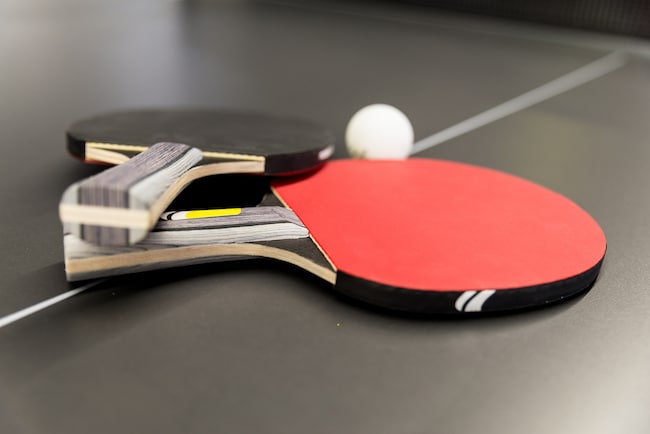
Best Blades in Table Tennis — How Can You Tell?
While various characteristics such as high speed are often valued in a blade, these are not always a good indicator of the top table tennis blades. This is because each player is different and values different properties. A defensive player, for instance, might not want a fast, stiff blade. The best table tennis blade for them is more likely to be slow and flexible.
This is why instead, you should look at characteristics that all players value. The first of which are high-quality blade materials. Unlike generic mass-produced table tennis paddles, blades from reputable table tennis manufacturers are made to much stricter standards and use high-quality wood and other materials.
Another quality that the best ping pong blades possess is that the handle should feel comfortable in your hands. Cheap paddles are often very rough and poorly designed, so an uncomfortable handle usually indicates poor quality. I would also argue that when rubbers are affixed to the blade, it should have a good weight distribution to it. While some high-level paddles are top-heavy, anything too extreme indicates a poor racket.
Table Tennis Blade Types
The type of blade you choose will depend on your play style. For instance, an offensive blade is probably the best fit for your style if you are an offensive player. Similarly, a defensive blade is optimal if you like to defend — an offensive blade would likely hurt your game.
There are three loose classifications for blades: defensive, all-round, and offensive.
Defensive Blades
As the name suggests, defensive blades are the best ping pong blades for players who like to defend. Think chopping or blocking. I’ve found defensive blades are usually the heaviest type of blade, but this depends on your preference. Many defensive models also have flexible blades to maximize control.
All-Round Blades
All-round blades are the best table tennis blades for players who like to play a mixed game with a combination of attacking and defending. This means all-round blades offer a good balance of control and speed — perfect for beginners and intermediate players. Some are flexible blades while others are a little hard.
Offensive Blades
Offensive blades are the fastest style that you can choose. The high levels of speed they possess come at the cost of control. As such, offensive models are the best ping pong blades for skilled players. They often feature lightweight materials but the increased plies can make them heavy.
Allwood Blades vs Carbon Blades
Every blade on the market features a series of layers or plies. It is these plies that determine how the blade performs. While the type of wood affects performance, it is the number of plies and general material choices you should pay the most attention to.
Fewer plies equal a slower blade. Most basic models are made up of 5 plies, all of which are wood. With few layers, these blades are not that quick, and as they are only made from wood, they are fairly flexible, which gives you a good feeling.
However, the most popular advanced blades are instead 7 plies thick. Most of the time, they include 5 layers of wood and 2 layers of carbon. They are commonly known as carbon or composite blades. The additional carbon fibers of these blades give them increased speed and stiffness. Stiff blades have reduced feeling, but advanced players already have great technique, so they don’t need blades with high feeling. Therefore the trade-off for speed among carbon table tennis blades is beneficial.
Styles of Table Tennis Blade
There are three styles of table tennis blades. The main style is shakehand. The others are two forms of penhold: Chinese penhold and Japanese penhold.
Shakehand Blade
Although I don’t have figures on hand, I would say that the shakehand grip is the most popular grip in the world by some margin. It’s largely thought of as a Western-style grip, but we are seeing more and more Asian players convert to shakehand as it seems to offer the best performance at the top level.
To adopt the shakehand grip, you hold the racket like you are shaking hands with someone. Your index finger rests on the edge of your backhand side, with your other fingers and thumb holding the handle itself.
Unlike with the other styles of blade, you have handle options for the shakehand grip:
- Flared: The most common handle type. Also known as concave, it is thinner in the middle and wider at the base. It gives you good grip and helps prevent your racket from flying out of your hands.
- Anatomic: Similar to flared except with a bulge in the center. Naturally fits the contours of the hand better and may be a good choice for players with particularly large hands.
- Straight: The most prone to losing grip. It does, however, make transitioning between the forehand and backhand a little easier — an issue many players have.
Chinese Penhold Blade
Chinese penhold blades are for players who use the Chinese penhold grip. They have shorter handles than other blades and flare out a little bit toward the base.
Chinese penhold offers more wrist flexibility than shakehand making it great for producing spin, particularly on serves. The backhand, however, is comparatively weak compared to the forehand.
You hold the paddle like a pen to adopt this type of grip. The handle rests between your thumb and index finger, with your other fingers curled inward on the backhand side.
Japanese Penhold Blade
Japanese penhold blades are for players who use the Japanese penhold grip. Unlike other blades, much of the base is made entirely from cork, and the handle is rectangular.
Japanese penhold has similar advantages and disadvantages to Chinese penhold. However, you can’t use the reverse penhold backhand grip like you can for Chinese penhold. This is because many Japanese penhold blades use cork on the backhand side, so you can’t glue a
The only difference between the Chinese penhold grip and the Japanese penhold grip is how your fingers rest on the backhand side (at least, where your backhand side usually is!). Rather than curling inward for Chinese penhold, they rest straight.

Conclusion
While finding the best blades in table tennis can be difficult, it is simply a matter of looking at the properties of each blade and matching them up with your style. While control, speed, and handle types are the most obvious, you should also pay attention to the likes of composition, stiffness, and hardness. We hope you find our guide insightful and enjoyed reading each table tennis blade review.
To reiterate, our favorite carbon paddle is the Butterfly Timo Boll ALC. It’s been a popular blade with pros and amateurs for many years, and we don’t see this changing any time soon. Its blend of offensive abilities coupled with respectable control make it an asset for most advanced attackers.
If, on the other hand, you want to try an all-wood offensive paddle, we feel the Yasaka Goiabao 5 is the perfect choice. It doesn’t get the recognition it deserves as it is one of the few cheap top-performing offensive paddles. One of the main reasons we love it so much is because it is incredibly undervalued. You get way more bang for your buck playing table tennis with it than, say a blade from Butterfly.
As for an all-round option, we recommend the Butterfly Petr Korbel. In all honesty, there is not much in it between it and the Sweden Extra. We just feel the slightly stiffer Petr Korbel blade will feel more natural to most players.
Finally, if you’re looking for a defensive blade, perhaps consider the Donic Defplay Senso V3. It may be old, but it’s reliable. It’s also incredibly cheap, which is great to see!
Best Table Tennis Blades — Frequently Asked Questions
What Is the Fastest Table Tennis Blade?
There are several blades that share the title of the fastest table tennis blade. Among them are the Stiga Carbonado 145, Butterfly TriCarbon, and DHS Hurricane Long 5X.
What Is the Most Popular Blade?
According to Revspin, the Butterfly Viscaria is the most popular table tennis blade. However, our favorite carbon blade, the Butterfly Timo Boll ALC, ranks second.
Do Table Tennis Blades Matter?
Table tennis blades significantly affect your game, so it matters a great deal which one you choose. A blade that suits your style will help you play to the best of your ability, while one which clashes with your style will hurt your performance and leave you frustrated.
What Blade Does Fan Zhendong Use?
Formerly, Fan Zhendong used the Viscaria, but he has recently switched to using his signature blade: the Fan Zhendong ALC.
What Is the Sweet Spot of Table Tennis Blades?
The sweet spot is the central position of the paddle, where shots are consistent and predictable. As you move out toward the edges, the properties change, reducing the quality of your shots. Carbon blades tend to have a huge sweet spot compared to allwood blades making them appealing to many players.
What Blade Does Ma Long Use?
Ma Long uses the DHS W968 Hurricane Long 5 National. This is an adapted version of the Hurricane Long 5 National Blade, which is specifically adapted to match Ma Long's playing style. It is one of the most expensive blades available and among the most perfect table tennis blades in existence.
What Are Table Tennis Blades?
A table tennis blade is the wooden part of your ping pong racket. They come in various styles and compositions, affecting how they play.
According to ITTF rules, blades must be rigid and made from natural wood. They can contain other materials, such as carbon. However, this must not exceed 7.5% of the total thickness of the blade.
Related post:
- Best Nittaku Blades
- Best Butterfly Blades
- Best Yasaka Blades
- Top 10 Best Table Tennis Racket Reviews

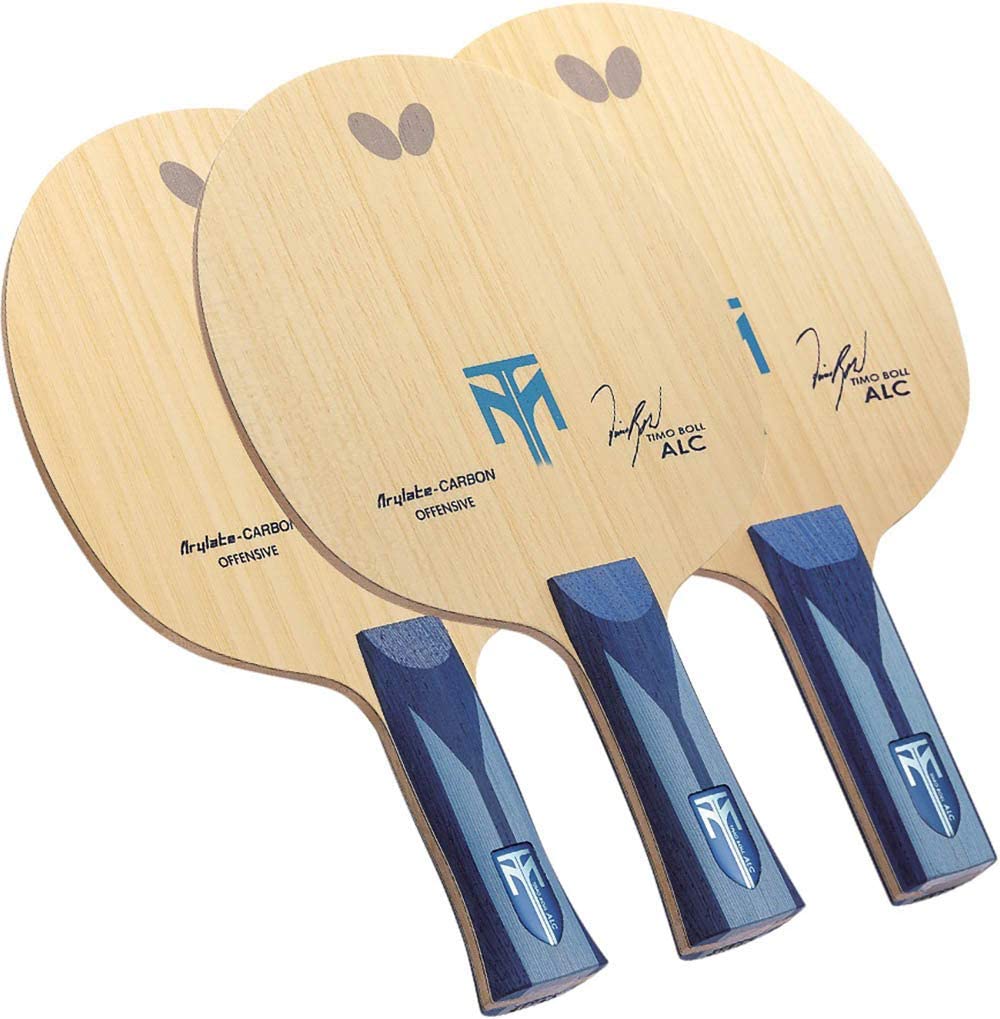
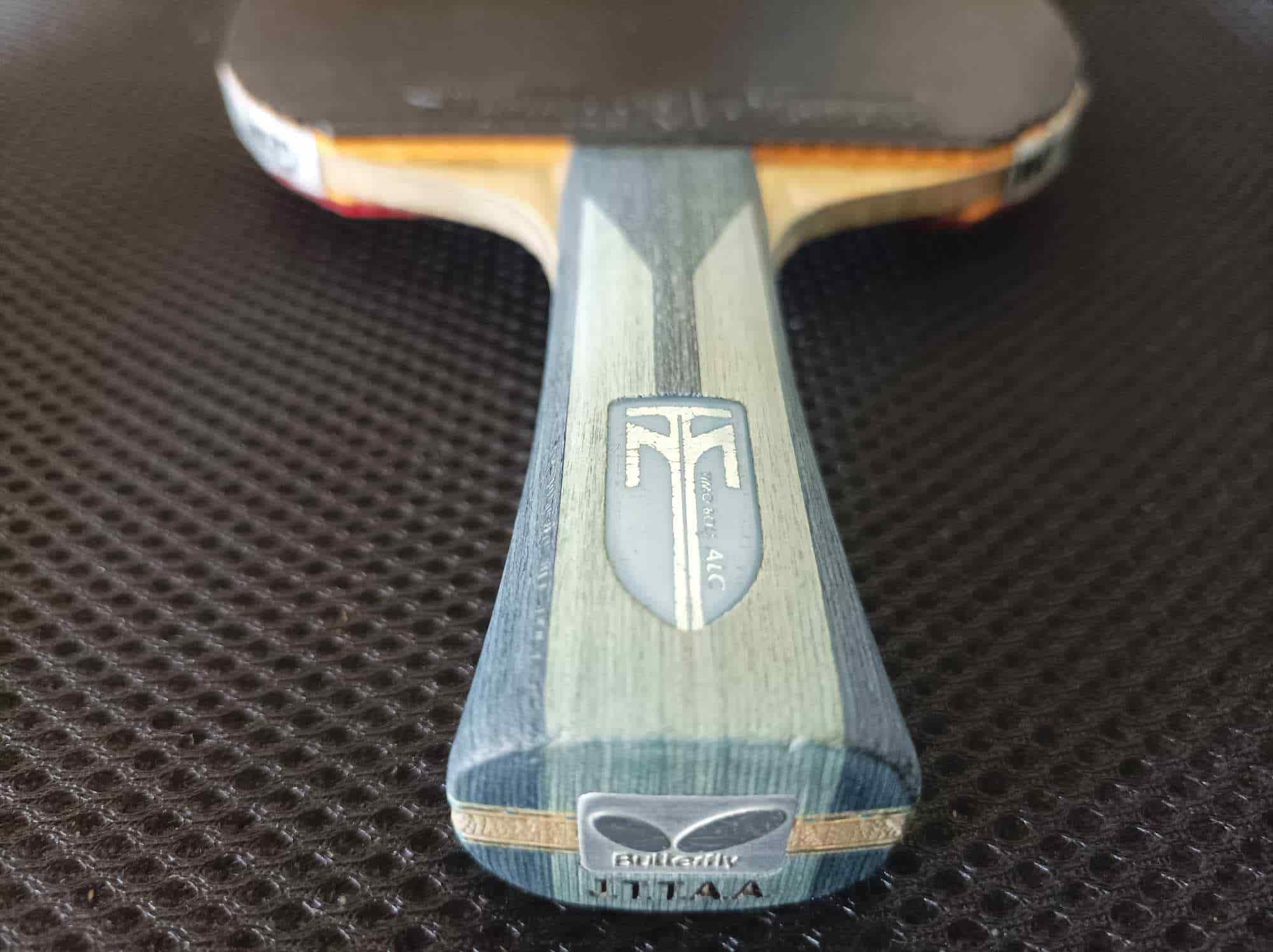
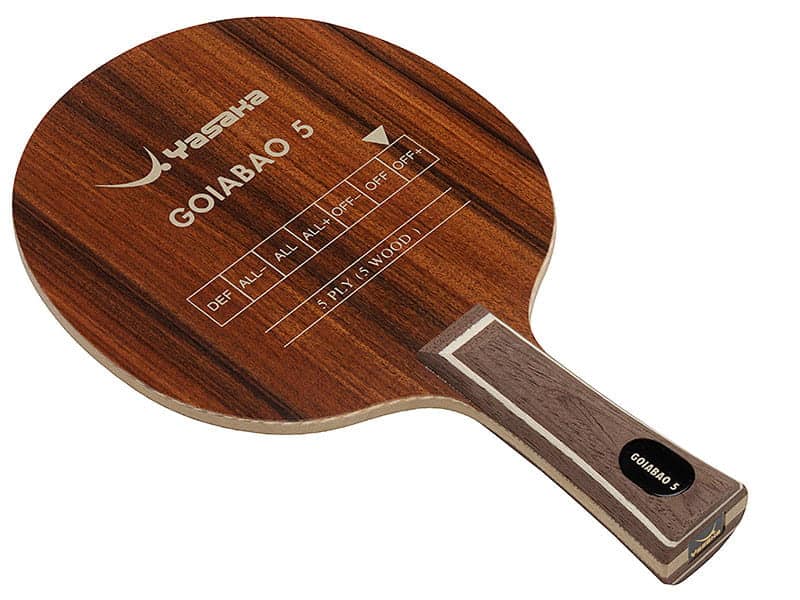
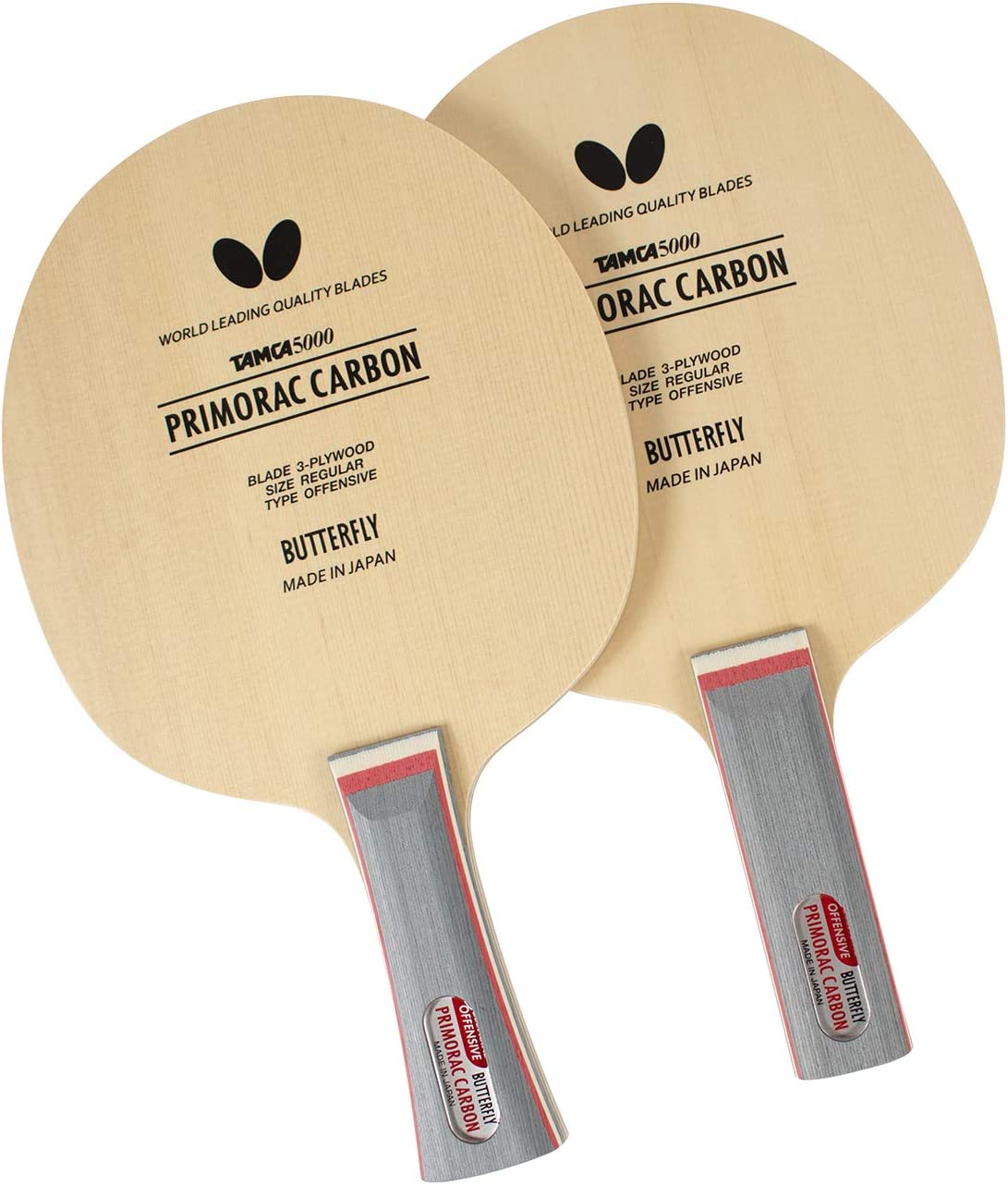
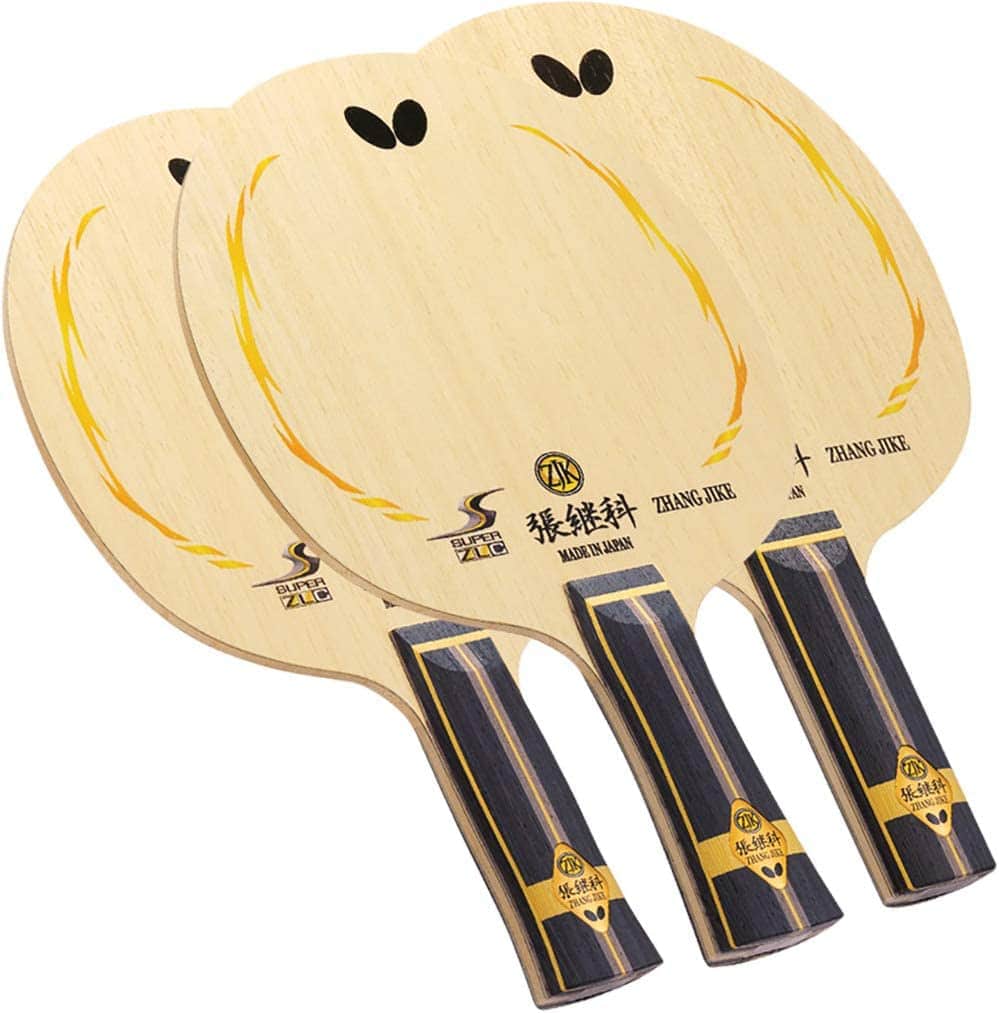
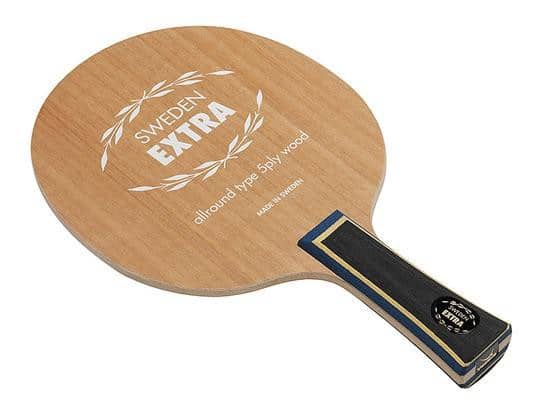
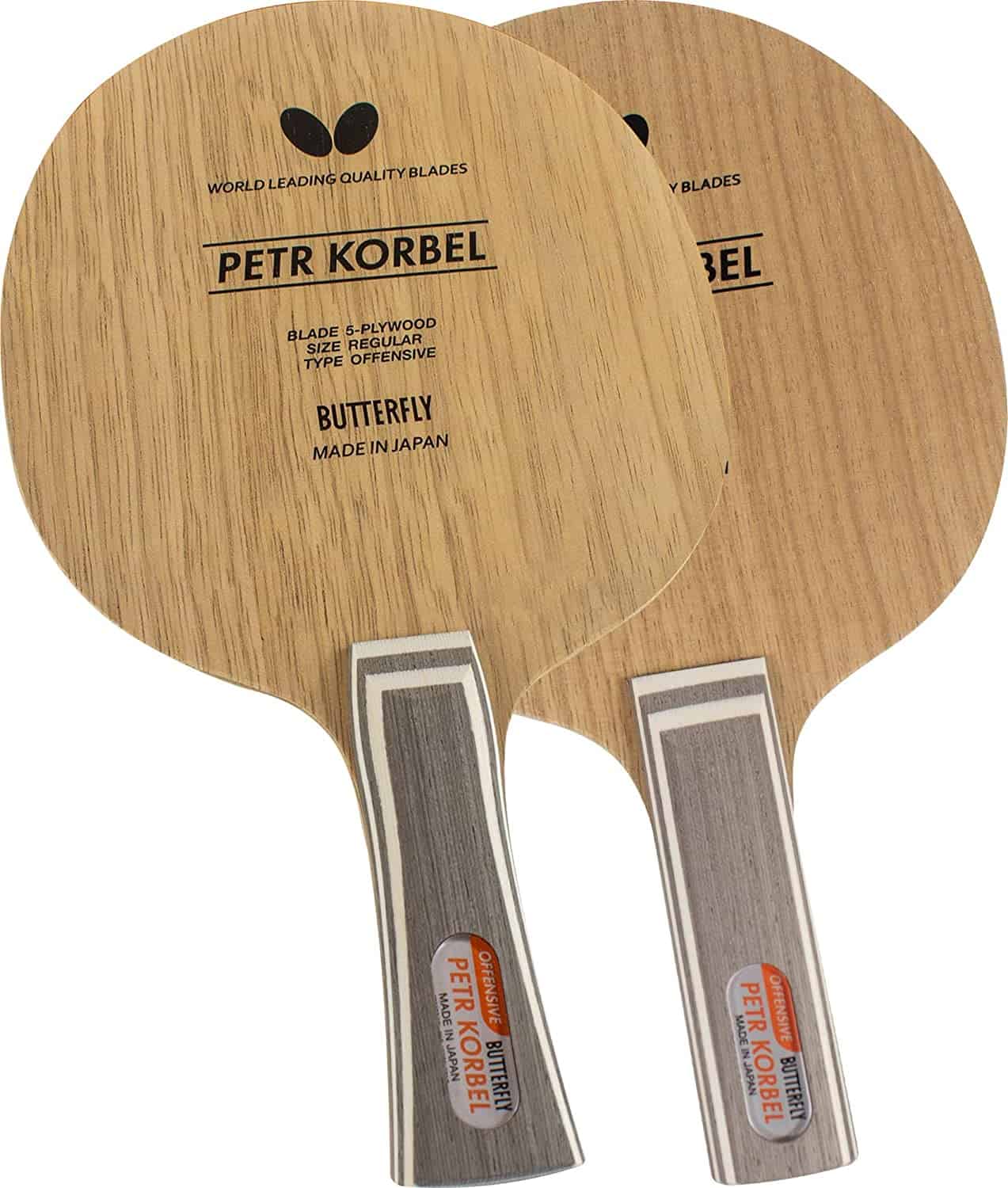
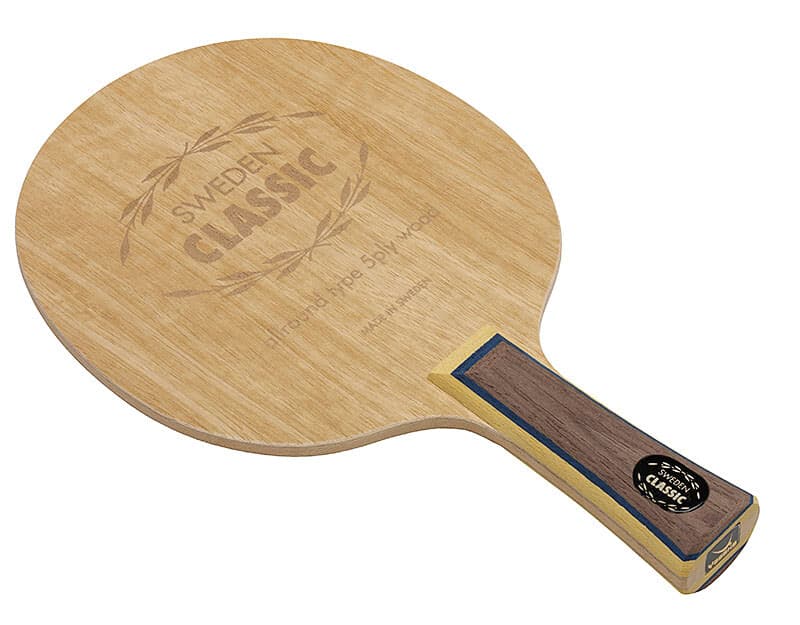
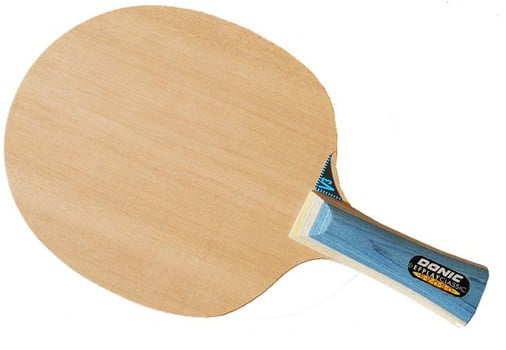
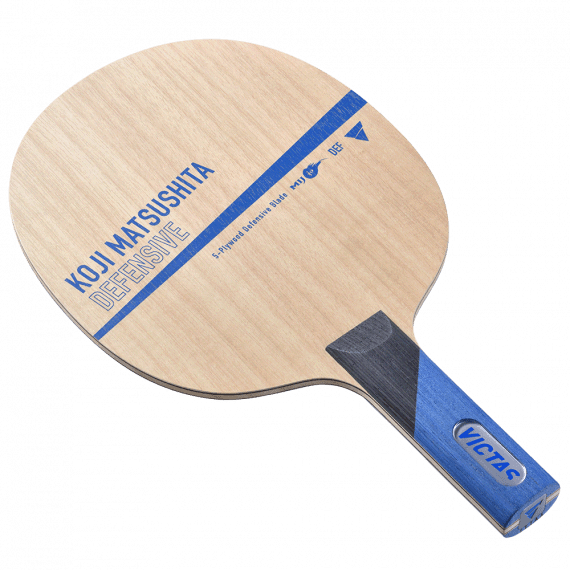
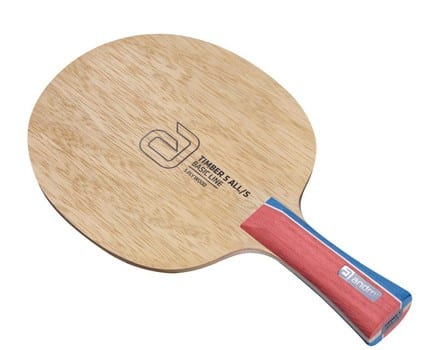
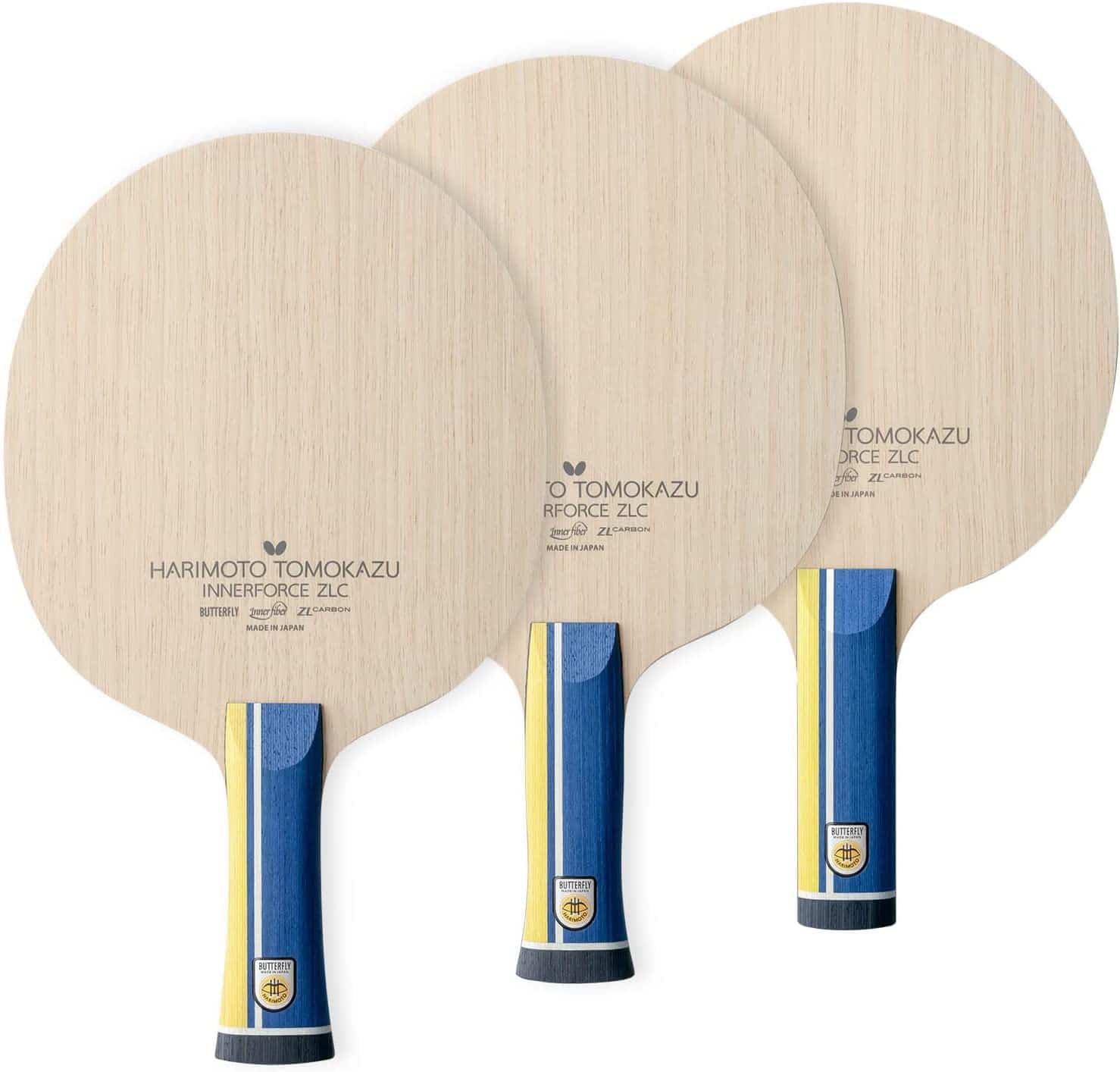

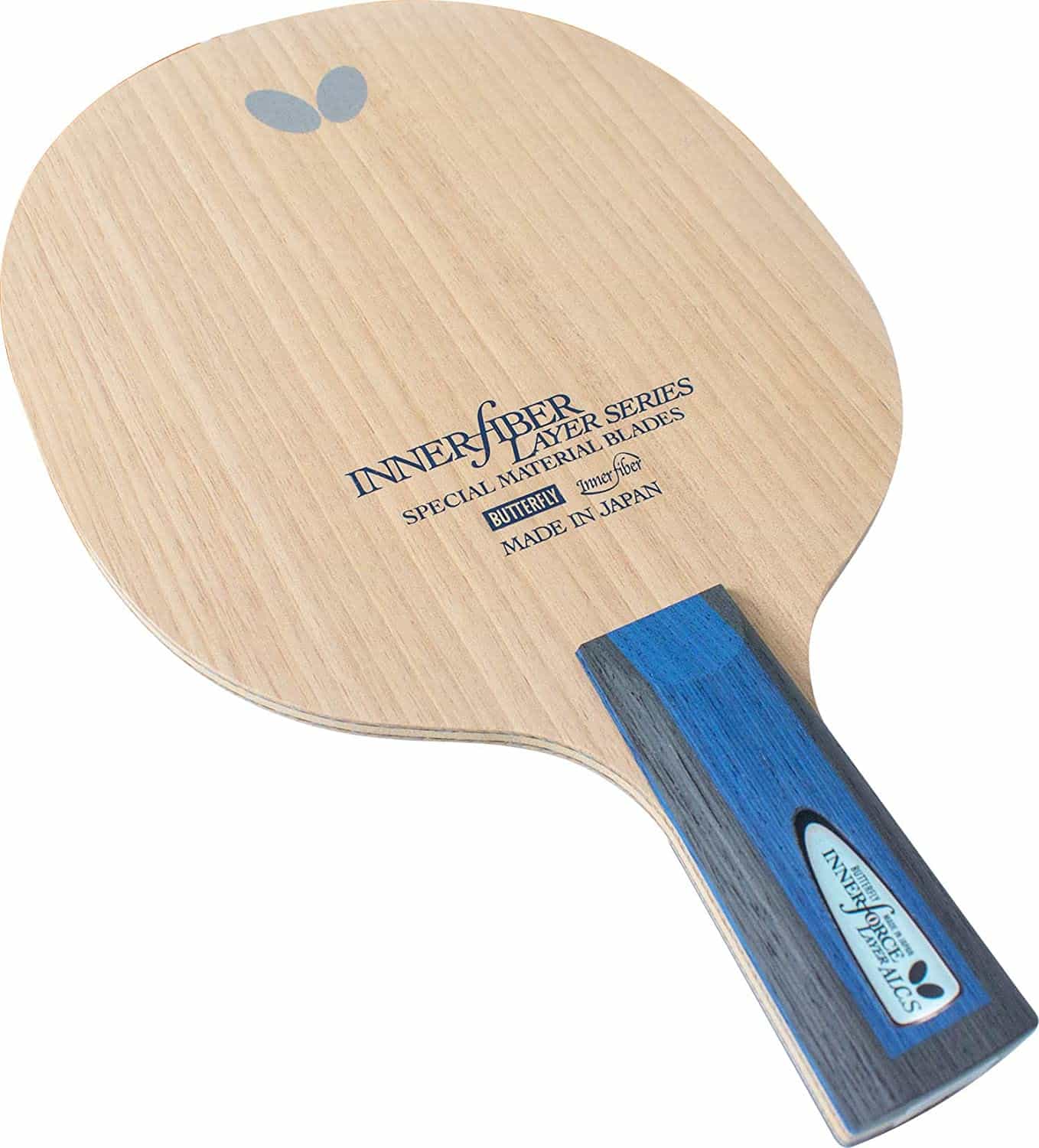
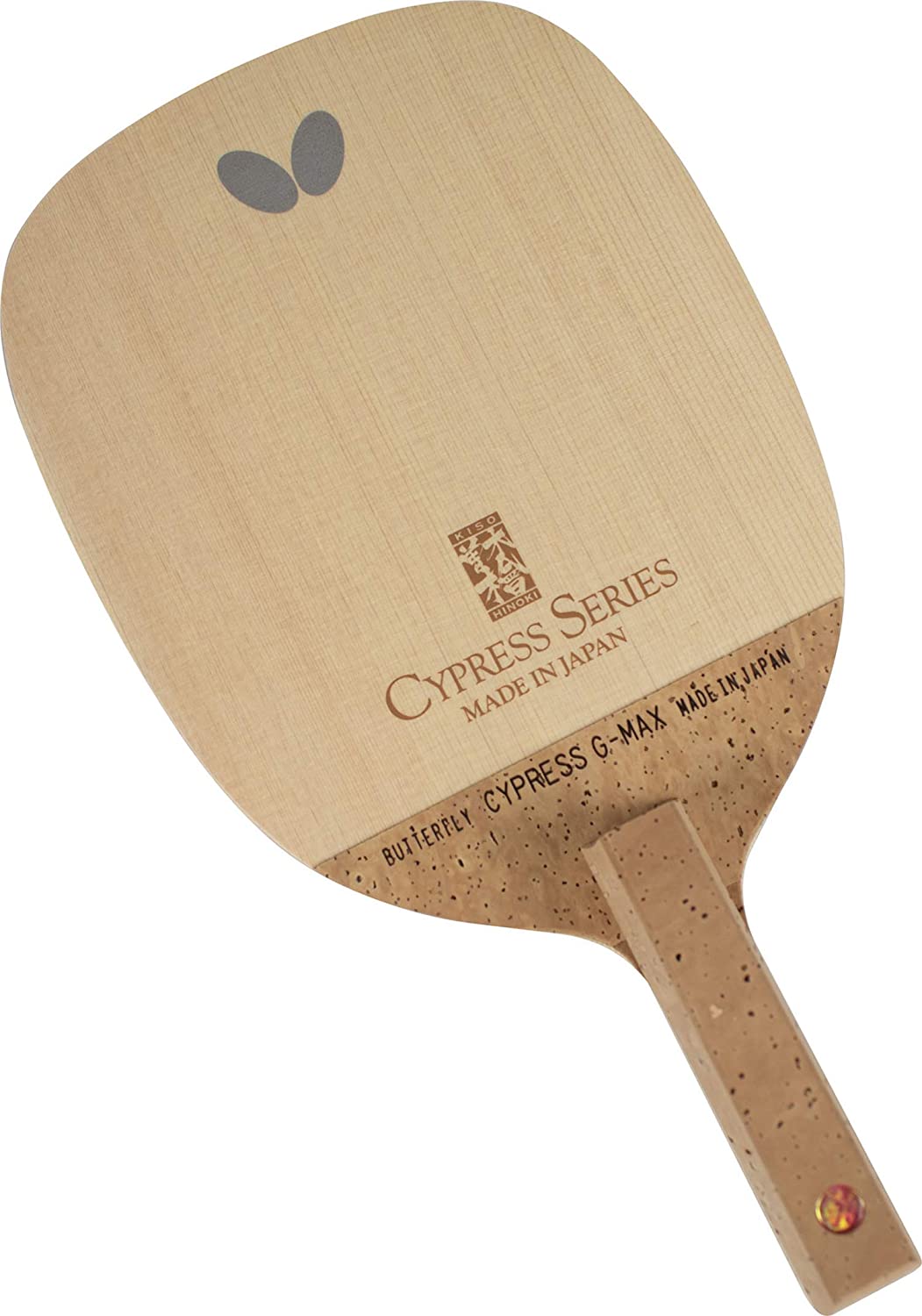

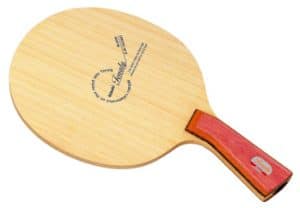
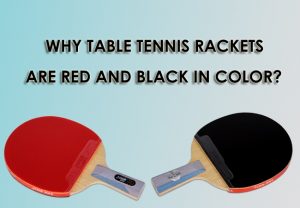
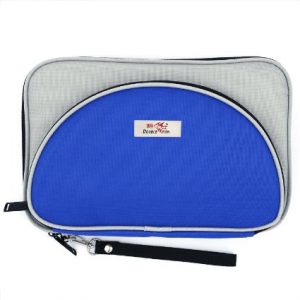
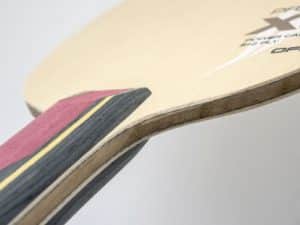
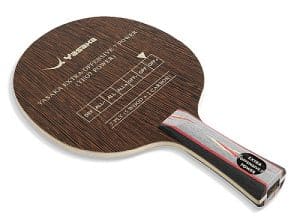
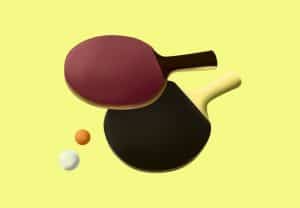
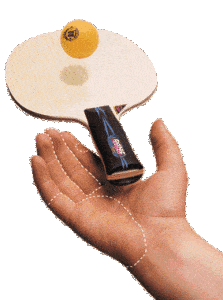
2 thoughts on “8 Best Table Tennis Blades: Pros, Cons, & Full Guide”
I found the sections that specifically for the table tennis tables and table tennis rackets (also known as table tennis paddles) are very informative for me. You can find out about the construction of the rackets and the various effects different rackets can have on the way you play the game. You can also find out about the regulation size for ping-pong tables, table tennis assembly and storage, and indoor and outdoor tables.
I would suggest the author to write something on the workout so that I can gain the benefit of what is the best workout for me to improve my tt skill.
What are the best bats for table tennis? Should I choose for heavy or lighter bats?